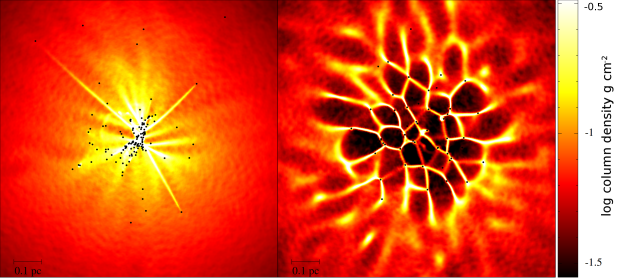Cloud-cloud collisions

It is commonly assumed that collisions between interstellar clouds trigger star formation, by producing a dense, gravitationally unstable layer of gas. In this work we present SPH simulations of cloud-cloud collisions, and explore the statistical properties and the spatial distribution of the stars that form, as a function of the velocity of the collision, v. There are clear trends with increasing v. At low v, the shock-compressed layer breaks up into an array of predominantly radial filaments, a `hub-and-spoke' system; a single large-N cluster forms in the central hub, and evolves by competitive accretion, producing one or two very massive stars and a diaspora of ejected low-mass stars. At high v, the shock-compressed layer breaks up into a network of filaments resembling a spiders web; most stars form in isolated cores at the intersection of these filaments, and since each core only forms a small number of stars there are fewer low-mass ejecta. As the relative velocity increases we also find that the mean protostellar mass increases, but the maximum protostellar mass tends to decrease.
Turbulent cores
One of the most researched modes of star formation in recent years has been the fragmentation of prestellar cores induced by the internal turbulent motions of the gas.
Complete publications
- "Investigating the global collapse of filaments using smoothed particle hydrodynamics";
Clarke, S. D. & Whitworth, A. P., MNRAS, 449, 1819; ADS